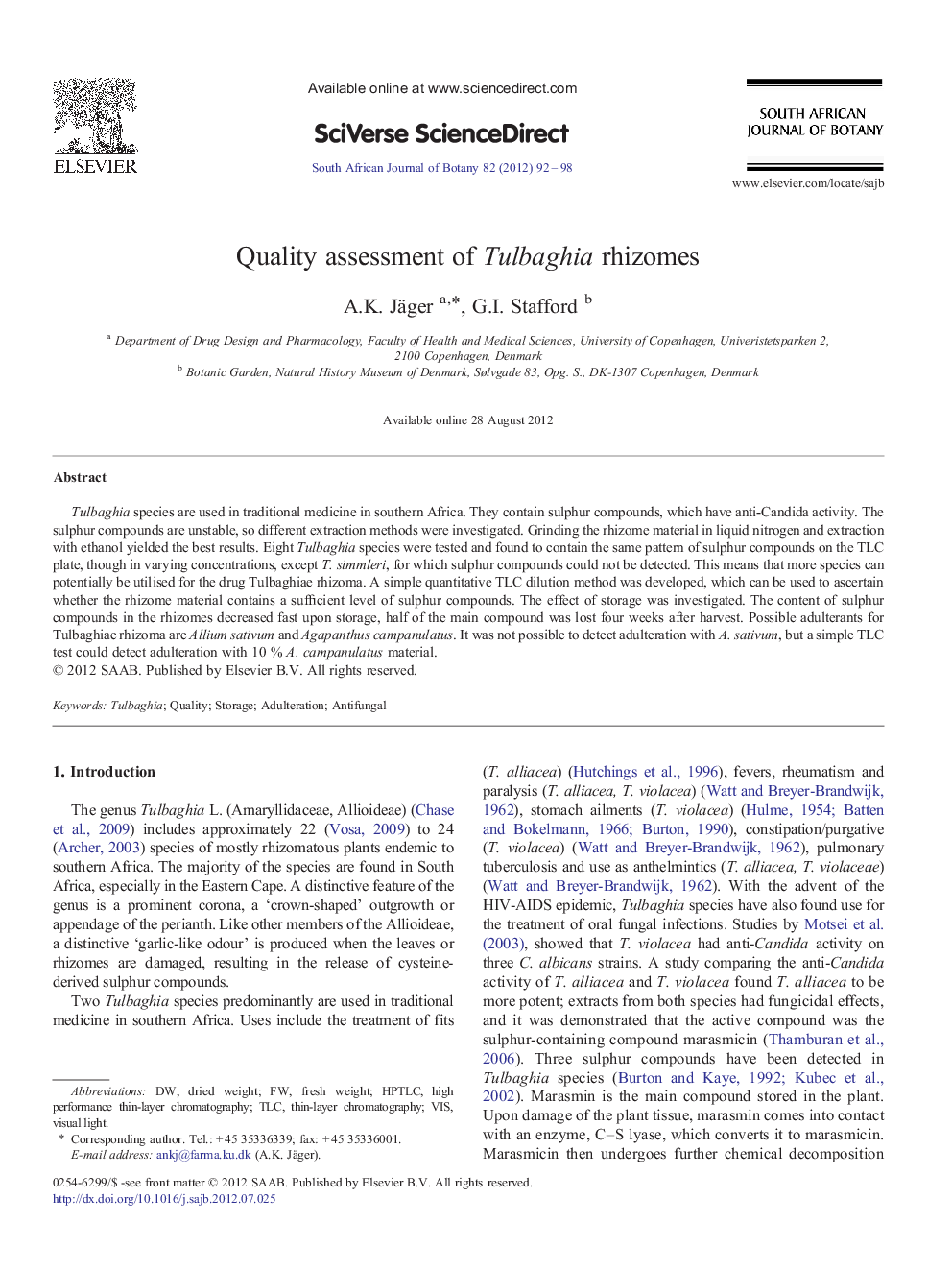| کد مقاله | کد نشریه | سال انتشار | مقاله انگلیسی | نسخه تمام متن |
|---|---|---|---|---|
| 4520975 | 1625176 | 2012 | 7 صفحه PDF | دانلود رایگان |

Tulbaghia species are used in traditional medicine in southern Africa. They contain sulphur compounds, which have anti-Candida activity. The sulphur compounds are unstable, so different extraction methods were investigated. Grinding the rhizome material in liquid nitrogen and extraction with ethanol yielded the best results. Eight Tulbaghia species were tested and found to contain the same pattern of sulphur compounds on the TLC plate, though in varying concentrations, except T. simmleri, for which sulphur compounds could not be detected. This means that more species can potentially be utilised for the drug Tulbaghiae rhizoma. A simple quantitative TLC dilution method was developed, which can be used to ascertain whether the rhizome material contains a sufficient level of sulphur compounds. The effect of storage was investigated. The content of sulphur compounds in the rhizomes decreased fast upon storage, half of the main compound was lost four weeks after harvest. Possible adulterants for Tulbaghiae rhizoma are Allium sativum and Agapanthus campanulatus. It was not possible to detect adulteration with A. sativum, but a simple TLC test could detect adulteration with 10 % A. campanulatus material.
► Tulbaghia species showed the same pattern of sulphur compounds on TLC.
► A quantitative dilution assay for marasmicin was developed.
► T. alliacea, T. galpinii, T. violacea had the highest amount of sulphur compounds.
► Sulphur compound content decreased after harvest, rhizomes should not be stored.
► Adulteration with Agapanthus campanulatus can be detected by TLC test.
Journal: South African Journal of Botany - Volume 82, September 2012, Pages 92–98